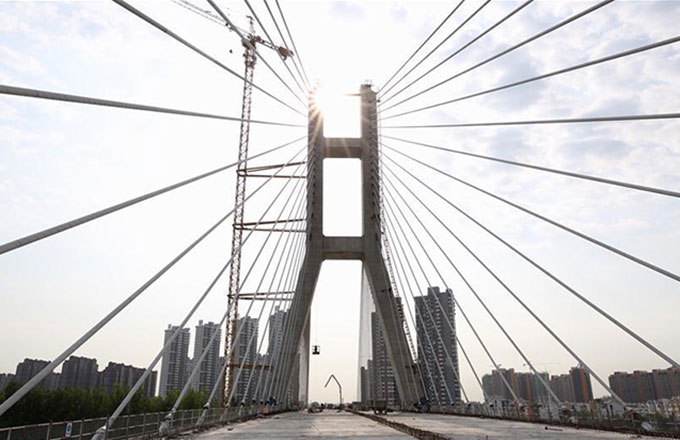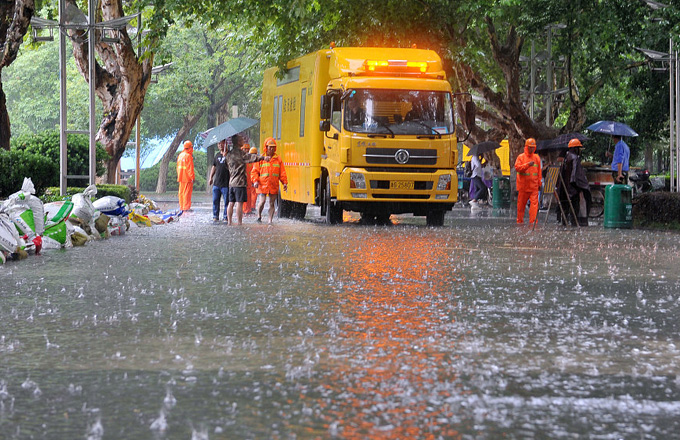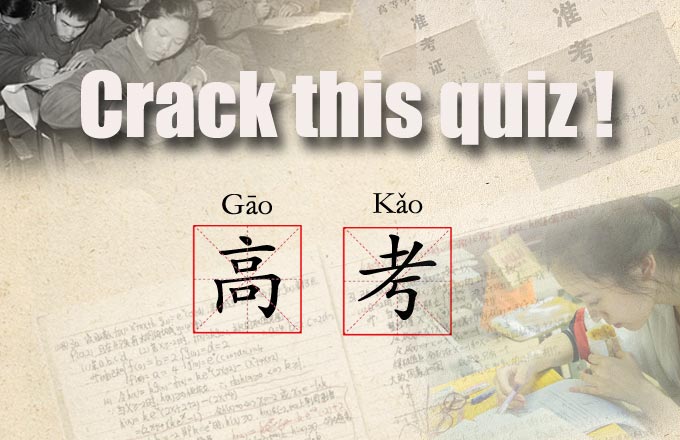China, US states show climate leadership
Having just thawed out from the Beijing winter freeze, a friend and I set out for the Xinjiang Uygur autonomous region in early April for what we thought would be a lovely spring holiday full of sunny strolls around lakes and satisfying hikes up mountains in northwestern China. What we had not imagined doing was pushing our hire car along an ice-covered road as snow swirled around us. This would in fact turn out to be one of our main outdoor activities as the unseasonable dump made those lakes and mountains impenetrable.
Our guide was apologetic. "It never usually snows in April," he said about as often as I wished I'd packed some decent warm clothes.
As climate change wields its influence on the planet, the idea of the "usual" weather pattern is increasingly irrelevant. And messing around with spring holiday plans is the least of the consequences.
While we were traipsing through deep snow in runners, down the road blossom tree growers were worried about a downpour battering the delicate flowers needed to turn into apricots. These are just the changes visible to the naked eye and an unscientific mind in one small part of the world.

When these changes are obvious to the naked eye and an unscientific mind, the US withdrawal from the Paris climate accord, while not unexpected, came as a blow. Perhaps President Donald Trump has never been left with an entirely unsuitable wardrobe on a spring holiday.
At moments like these its hard not to feel hopeless about the situation, so the presence of US governors at an international clean energy forum in Beijing this month was a timely reminder that Trump doesn't speak for everyone in the United States.
Sure, only he gets to sit at the Oval Office desk and claim the title of Leader of the Free World, but there are plenty of powerful leaders in the country. California Governor Jerry Brown is one of them. Days after Trump's parochial declaration that he was elected to represent Pittsburgh, not Paris, Governor Brown met President Xi Jinping and they did a climate deal of their own. While nonbinding, the agreement pledges cooperation on renewable energy technology, including zero-emission vehicles and lower greenhouse gas emissions.
California is the largest US economy and the sixth largest in the world - bigger than France, Spain and Australia - so it's hardly a bit player. It has been at the forefront of the renewable energy sector and with China investing $360 billion in green-energy projects by the end of the decade, the alliance makes sense environmentally and economically.
Rather than choosing between the citizens of their own cities and another country's, they recognize that it's not only possible to serve both, but it usually works out better for both sides.
Contact the writer at rosemary_b@chinadaily.com.cn
(China Daily 06/13/2017 page2)



















